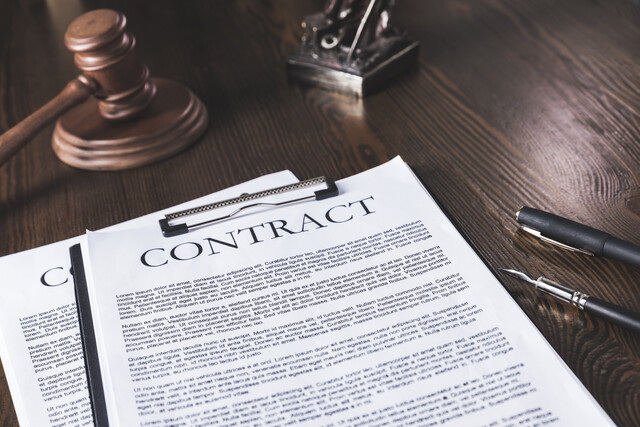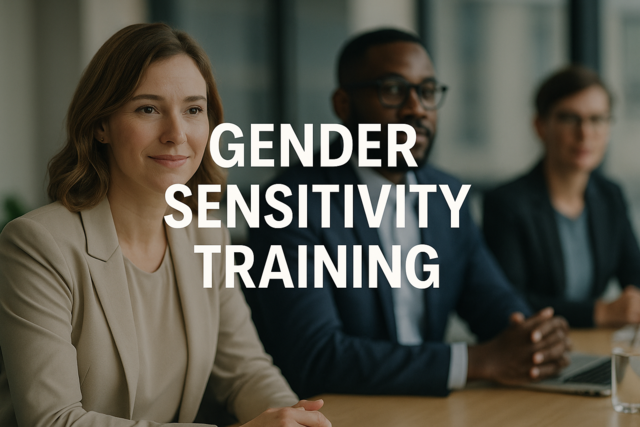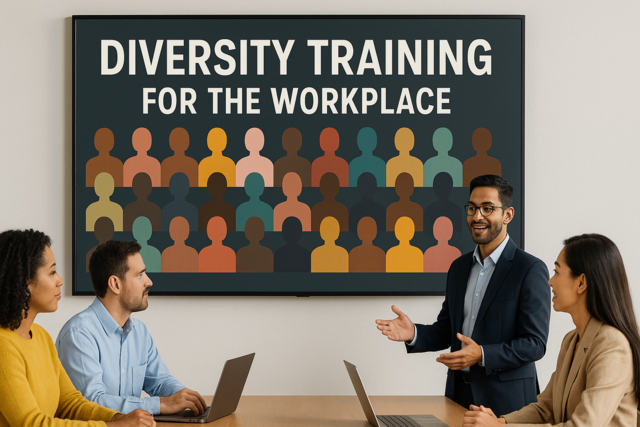Millions of employees drive a company vehicle as all or part of their job. Unlike working in an building, it becomes a little more challenging to set up safety procedures and ensure that they are being followed. There are things that those who are driving simply cannot control, regardless of how careful they are on the road. They can't account for weather, road conditions or what others around them may do. However, there are some things that they can do to remain safer on the road.
In 2006, the Bureau of Labor Statistics reports that there are 2,400 deaths per year as a result of occupational motor vehicle incidents. Most frequently it occurs in a highway accident. Additionally, the National Institute for Occupational Safety and Health reports that roadway crashes are the leading cause of occupational fatalities in the country.
| Prevention Strategies |
|
When it comes to driving company vehicles, it is especially important that prevention measures be in place. The injuries that take place from accidents can be life-altering or fatal. It is important that safety measures and guidelines be put into place, and that employees are motivated and acknowledged for following them. |
Prevention policies that should be considered include:
-
Always enforce mandatory seat belt laws.
-
Do not require workers to drive too many hours in a day or week, or during irregular hours.
-
Encourage employees to not use cell phones as they are driving. They should pull over to conduct any business that needs to be done on the phone.
-
Have a structured vehicle maintenance program in place to keep the vehicles running as they should.
-
Seek out company vehicles that provide more safety to those in them.
-
Discuss driving fatigue with your employees, and what they should do if they are feeling it while driving.
-
Provide adequate training to employees on using the proper procedures and preventative steps in driving company vehicles.
-
Place a high level of importance on employees driving safely and following preventative steps.
-
Employees should follow a drug-free policy and periodically be subjected to random testing to ensure they are drug free.
-
Make sure that there is proper auto insurance on the vehicle and that the employee has access to proof of it in case they need to show it at any point.
-
Stress to employees that they should not be multi-tasking as they are driving (e.g., eating, conducting business, using a laptop or Blackberry, etc.).
-
Always keep up with driver performance, including making sure they have a valid driver's license, checking their driving record periodically, and maintaining records on the person's driving records.
| Defensive Driving Skills |
As humans, we have issues that we deal with that can make us well, or lead to being unhealthy. To have healthy employees, many businesses incorporate health and wellness initiatives into their plan. These things can happen to good employees. Addressing the issues and helping to lead your team down a path of wellness will make for a healthier group of employees. Creating initiatives in the workplace to address these issues will make for a healthier workplace team.
Substance abuse issues are common problems that affect many businesses. Whether employees abuse drugs or alcohol, it can become a big problem in the workplace that can affect the person's health -- and even lead to injuries and illnesses on the job. Having a drug-free workplace is essential to workplace safety. Upon hiring employees, businesses can require that they undergo drug testing ensure they are not drug users. They also can find out if they have any prior drug convictions on their record.
| Weight Issues |
|
Obesity can be a workplace problem that puts people at a higher risk for injury, illness, and death. It also can lead to higher health insurance premiums that the business will pay. Many corporations today are encouraging their employees to take control of their weight through workplace programs and incentives. Even places like Weight Watchers offers an on-site workplace group meeting for those businesses that would like to implement one at their office. |
To encourage a healthy lifestyle and weight management in the workplace, consider the following tips:
- Offer incentives to employees for losing weight. Those incentives can include prizes, days off, and other such rewards.
- Provide time during the workday for employees to take a walk to get exercise. This can be 15 minutes per day, or more. You can even consider creating a time during the day when everyone in the office takes a walk, or certain departments get a walking break.
- Create a fitness room where employees can work out or do exercise videos on a break. The fitness room may have treadmills, stationary bikes, and other exercise equipment. If people have access to it before and after work, as well as on their lunch break, they end up using it frequently.
- Encourage physical activity out of work, including engaging in team activities, such as sports, bowling, etc. Let them know it's about getting physical together. See what activity interests them, and then sponsor a team.
- Pay for a weight loss program as long as the employee is making progress. Often times people are interested in going to a weight loss program, but they don't want the expense. It may be cheaper for you to pay the weekly meeting fee for a weight loss program, than it is to keep paying higher insurance premiums. If you offer to pay the fee for them, they will be more apt to stick with it and lose weight.
- Bring in a trained professional to offer weekly or monthly guidance to the group. Personal trainers and other fitness motivators, including health promoters, can be successful in motivating the crowd to take control of their health. They also can give them the tools to do it.
- Make healthy living while at work convenient for the employees. By having things at their convenience, such as access to healthy food, time to exercise, and motivation, they will find it more convenient and will be likely to stick with it.
By implementing such a program in the workplace, employees are more likely to be successful at weight loss. This is because they have the support of co-workers and do it as a team effort. Additionally, the more people that are trying to get healthy in the office, the less people will be stocking the break room with donuts.
Maintaining a healthy workplace doesn't stop at what you say to employees. It also means leading by example. If your business offers a cafeteria or snack/vending machines, it is important to make sure the options offered in both are healthy. Work with your suppliers to ensure that healthy options are available at all times. Keeping the unhealthy food out is the most effective route to making sure that they make healthy selections.
Once your safety committee has addressed the concerns at your workplace, you will need to monitor what you have set up. What you monitor and inspect will vary from place to place. Not every business has the same exact safety concerns. What you should monitor is what you made a priority during your safety committee meetings. In this lesson we will look at conducting an inspection and some of the main things that you should consider looking for, if they are appropriate for your business setting. For example, some businesses will need to check to see if the employees are wearing safety glasses, while others to not work in a setting where they are required.
Conducting a workplace inspection is essential to ensuring your business is following proper safety and health procedures. Conducted regularly, typically twice per year, you should be able to use them to:
- Find and record potential hazards.
- Determine what needs immediate attention.
- Evaluate whether your current safety measures are effective.
- Provide information on what needs to be addressed in order to make the workplace safer.
-
Housekeeping program. Check the waste disposal arrangement, tools, materials, cleaning methods, remote areas, storage areas, and look for leaks and spills. The overall goal of the housekeeping program is to ensure that things are kept clean, orderly and organized. If they are not, it can be a safety hazard.
-
Shipping, Receiving and Processing areas. This area may also include a storage area. Notice the layout, heights, how the material is being handled, and storage methods. Pay special attention to the height of any type of inventory that you may have. If it is stacked too high it can pose a serious risk.
-
Grounds and building. The building should be inspected, including the walls, floors, stairs, walkways, exits, ceilings, driveways, aisles, and any ramps. This is one of the most effective measures you can take in preventing workplace falls, which are a very common form of injury incurred on the job.
-
Electrical. All of the electrical equipment should be inspected, including the switch boxes, circuits, switches, breakers, fuses, motors, tools, extension cords, grounding; check to make sure it is in compliance with codes.
-
Lighting. Inspect the lighting for the type, conditions, location, shadow control, intensity, and glare. Notice if there are any burned-out bulbs, especially in areas such as the parking lot, closets, or restrooms.
-
Heating and Ventilation. Check the heating and ventilation system to ensure it is working effectively. Inspect the temperature, exhaust, controls, and ventilation.
-
Machinery. Check all machinery that may be used to see if it needs adjusting, if it is working properly, needs oiling, maintenance, or grounding, and how the work space suits it. Machinery can include any that is used in the manufacturing process, as well as what is used in the office area. Such things as copy machines and computers should be evaluated to ensure they are working properly.
-
Chemicals. Inspect to see if any on-site chemicals are being properly labeled and stored;, also look for spills, disposal, the amounts being used, warning signs, material safety data sheets, and proper protective equipment being used. Chemicals may be those used in manufacturing, but they also can include any cleaning supplies that are used by the company.
-
Fire Prevention. Check to see if all the alarms, extinguishers, and sprinklers are working properly. Also, notice if there are any flammable materials where they shouldn't be. In fire prevention, you should also ensure that there have been fire drills throughout the year. Employees need to know what to do and where to go in case there is a fire.
Self-inspection for a business can be broken down into different types, depending on when it's being conducted and what is being inspected. Here are some of the more common types of self-inspection:
-
Spot inspections are done on an random basis, and are part of normal safety routines.
-
Pre-operation inspections are conducted before using equipment.
-
A critical parts inspection is completed on the critical parts of a machine or piece of equipment.
-
New equipment inspections are completed on new pieces of equipment before they are used.
-
Routine planned inspections are done on a regular basis and cover all the procedures with a company safety mission.
Helpful Tools
The U.S. Department of Commerce offers a printable checklist for conducting an inspection. This form is designed for safety managers. You also can use it as a model to create your own list that pertains to what needs inspecting at your workplace.
| Other Items to Consider |
When conducting the inspection, it is ideal to not disrupt the employees or start blaming people for what is discovered. Ideally, the person conducting the inspection should go along in a professional manner, without disruption, just inspecting and recording what is discovered. After the inspection, the results should be discussed with management and the safety committee. Areas needing to be addressed should be remedied, and there should be a follow-up to make sure they were taken care of properly. Monitoring of specific areas and items may be necessary to ensure that safety measures are being followed as they should be.






























